Italian culinary culture has a long history of producing cured, fermented, smoked and preserved meats known as salumi. Last week we began this three-part series with Prosciutto, Mortadella, Genoa, Milano and Calabrese Salami.
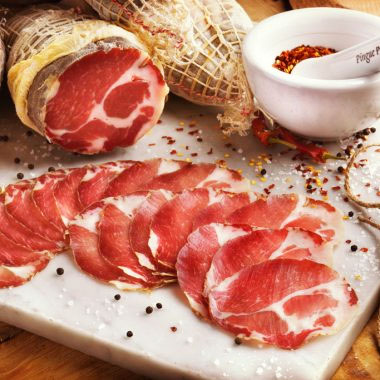
Capicola – In America, capicola is a salumi that has many interchangeable names. You may see it called cappicola, capocollo or coppa. In the Neapolitan dialect, it became gabagool. Not only does it have multiple names, but its origin is divided as well. Some say it comes from Italy’s north, around Piacenza. Other histories place capicola from the country’s southern regions, particularly Campania and Calabria. Capicola is made most often from pork shoulder or neck. The meat is first given a mixture of salt, red pepper flakes, black pepper and other spices. These seasonings give capicola its signature spicy and fragrant flavor. Afterward, the meat is carefully rolled into a cylindrical shape and tied with string, creating its characteristic streaky appearance.
In Italy, the truth about capicola is that its many personalities actually are separate things. Italian capicola or capocollo is a cooked pork product that is thinly sliced and more similar to ham from a deli counter. The dry-cured sausage that is typical of Italian salumi is specifically and exclusively referred to as copa. While either option is going to provide an authentic taste, the distinction is clear. Order capicola by any name at an Italian American butcher and more likely than not, you will be given an aged meat known for melt-in-the-mouth texture and marbled fat.
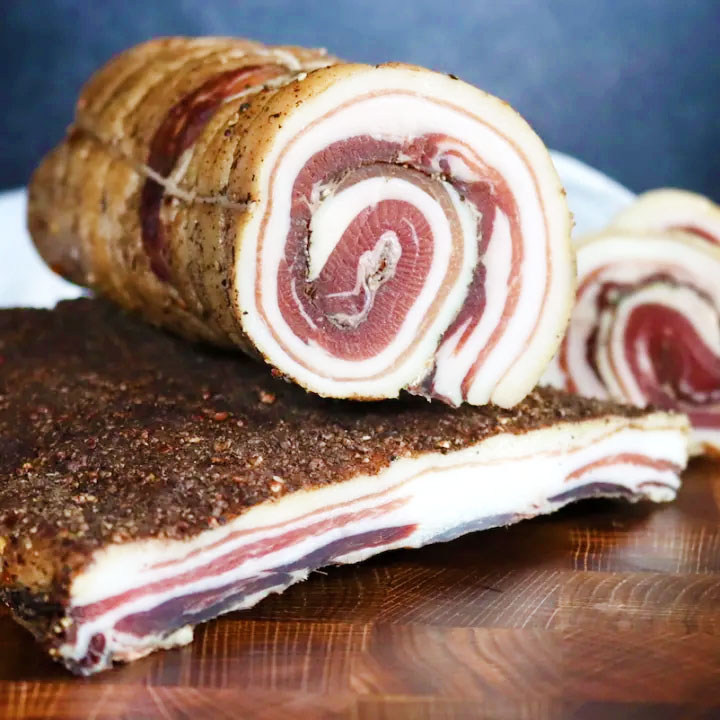
Pancetta – This cured pork product is often considered Italy’s answer to bacon. It is also made from pork belly, but pancetta is different from bacon in that it is typically not smoked. Pancetta is instead cured with salt and a blend of spices including black pepper and garlic, with sometimes fennel, juniper or red pepper flakes, depending on the many regional variations. Pancetta comes in two main forms: arrotolata and tesa. Arrotolata is rolled into a tubular shape and is the most common variety. Tesa, on the other hand, is flat and resembles traditional bacon strips. Both varieties are widely used in Italian cuisine.
The preparation of pancetta arrotolata involves rolling the seasoned pork belly into a tight cylinder, tying it with string and then allowing it to air-dry for several weeks. This aging process develops its flavor and creates its signature texture, firm, yet tender. Prior to salting, the pork belly is brined, which is the point at which much of the seasoning is infused. Pancetta tastes like bacon that is luxurious, savory and salty, but decidedly more complex than its American counterpart and holds far more weight as a culinary ingredient.
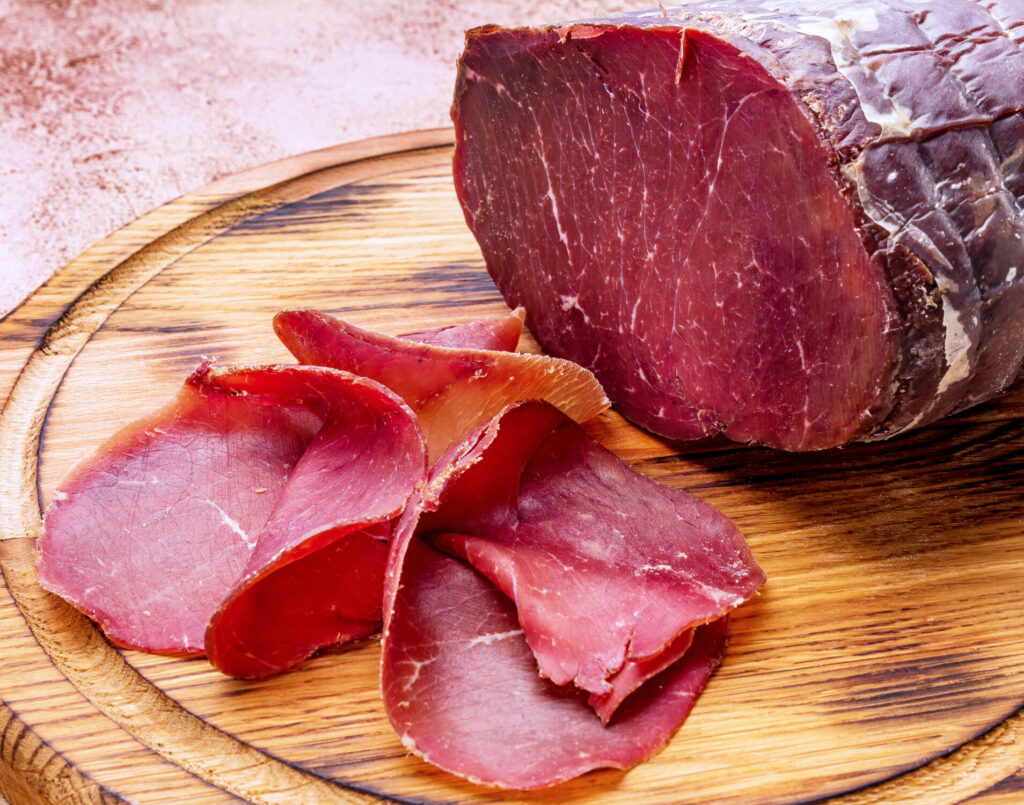
Bresaola – Made from beef, rather than pork, bresaola is different than most salumi on our list. The meat can taste slightly sweet and a bit musky with a lean, tender and intensely flavorful profile. With that in mind, you should know that not all bresaola is created equal. Although beef, normally sirloin or eye of round is most prominently used, some regions boast cured pork or horse meat as the main component for their bresaola. While in this country the use of the latter raises eyebrows, that is not the case in Italy, especially in the north, where in the Lombardia region, Bresaola Equina is a delicacy and is priced as such. To ensure you are getting the highest quality beef, look for Bresaola della Valtellina, which has a Protected Designation of Origin (PDO).
To create bresaola, lean cuts of beef are trimmed of excess fat by expert artisans. Each piece is then flavored with a mixture of salt, black pepper and whatever other regional flavorings are to be added. Sometimes, it may be wine, other times, vibrant seasonings. Bresaola is air-dried under closely managed temperature controls for up to several months. This meticulous process results in a deep red, near purple color and a dry, firm texture.
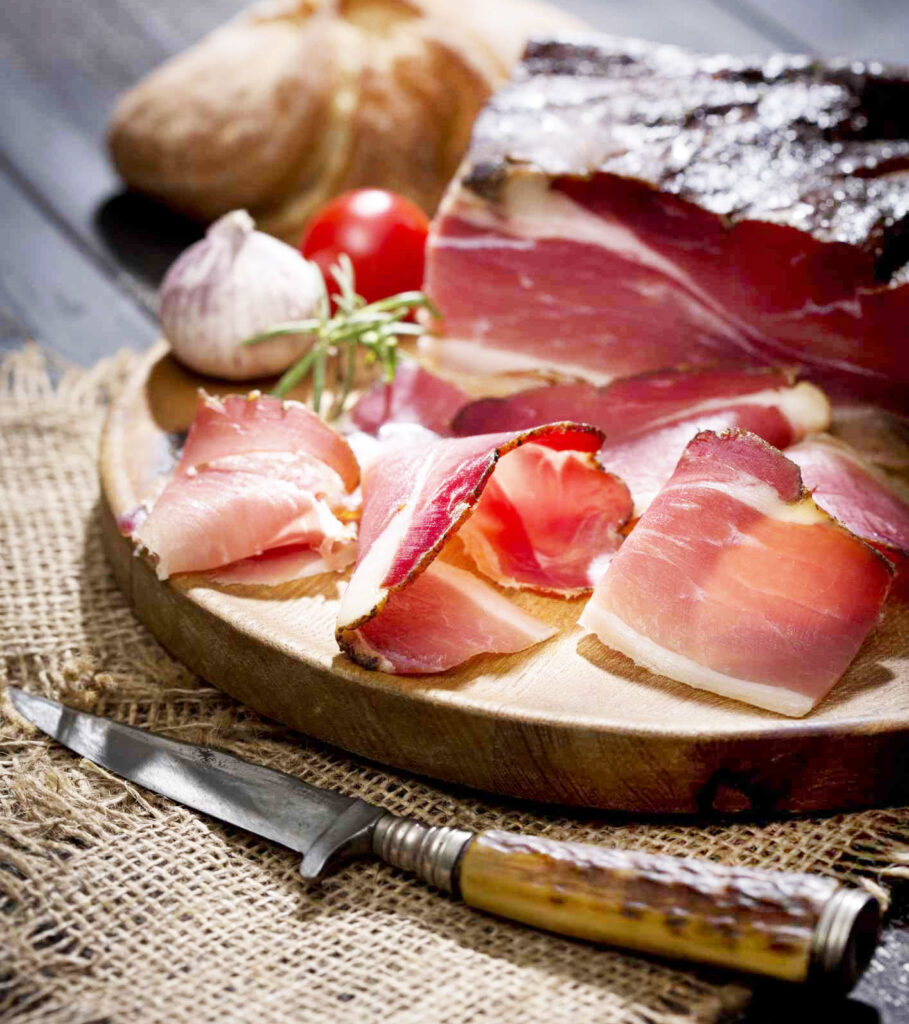
Speck – Some of Italy’s treasured meats have a distinct influence from neighboring parts of Europe and speck is an example of this. It comes from the northern regions of Italy, particularly South Tyrol, known as Alto Adige in Italian. Its preparation is closer to Northern European than virtually every other Italian meat. Like prosciutto, speck is crafted specifically from the hind leg of the pig, which is salt-cured and paired with a blend of spices such as juniper, garlic and a mix of aromatic herbs. The spice mixture varies from producer to producer, contributing to subtle regional differences in flavor, but make sure to look for Speck Alto Adige with a PDO for its unique production.
After the initial rub of seasoning, the pork undergoes a slow smoking process. Speck is air-dried in the fresh Tyrol air, allowing it to develop accents that echo back to the alpine mountain tops. The result is a marbled, ruby-red and flavorful meat, with a delicious blend of savory, smoky and slightly spicy notes. It is darker in color and has a different texture than prosciutto and has a harder edge even when cut thin. While great on an antipasto platter, Tyrolians often chop speck into thick chunks that are simmered into soup or stew.
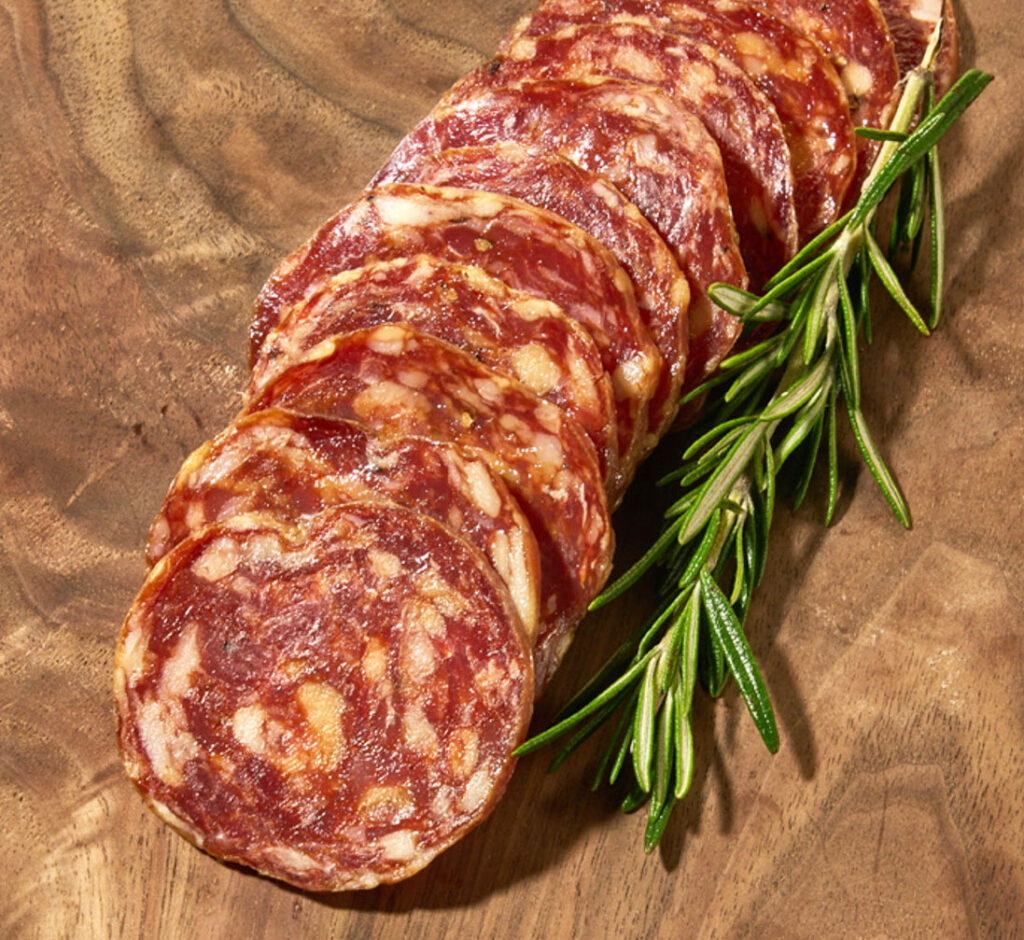
Sopressata – This salumi can be found all over Italy, with many notable varieties coming from the central and southern regions in particular. In Tuscany, there is even a variety that uses pork tongues. There are two primary features that make sopressata special. It is a very coarsely textured sausage and despite the vast range of unique expressions, most variations have a fiery and some might even say passionate character. Sopressata is typically made from pork, but the meat is not ground. Instead, it is roughly chopped with a knife to ensure the inconsistent texture. The inclusion of red pepper flakes is one of the keys to its spicy kick. The meat mixture is traditionally stuffed into natural casings and allowed to air-dry and age for around 40 days. During this process, the sausage will become more firm but never dense; the texture is typically tender and slightly chewy. The flavor of sopressata is bold and spicy and while some might cook with sopressata, it is recommended to eat it as is with cheese, olives, fruit and crusty bread.




